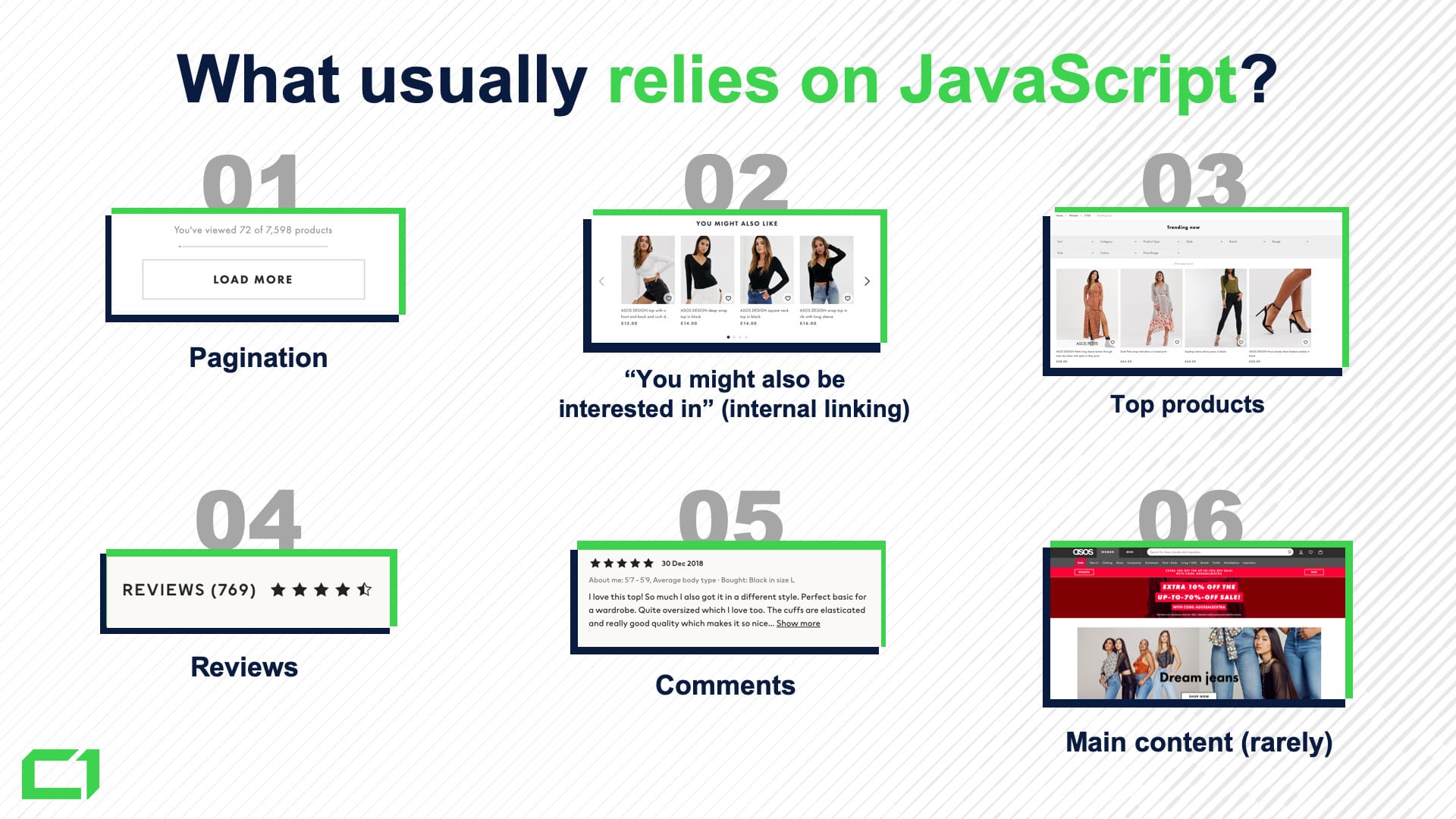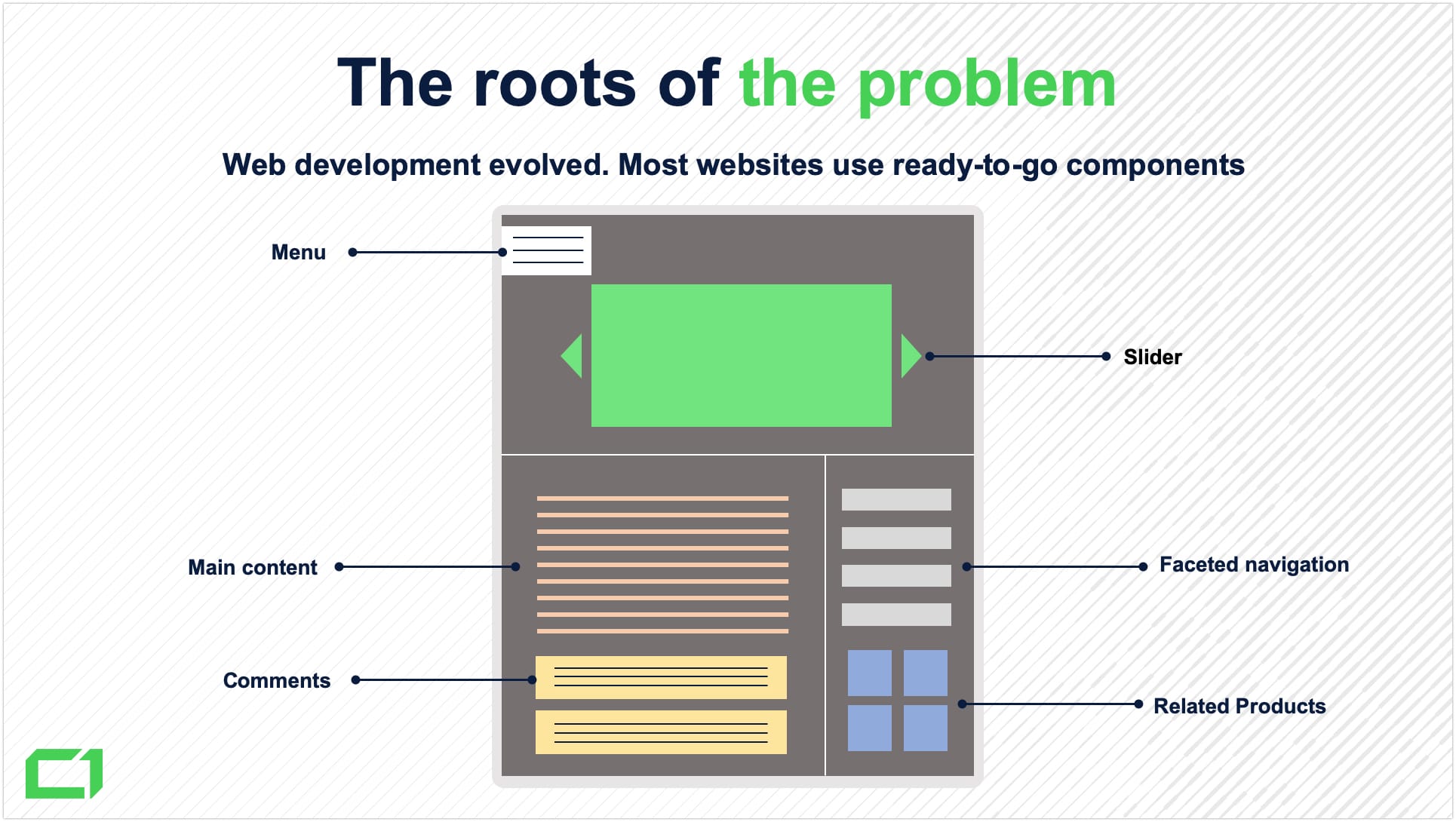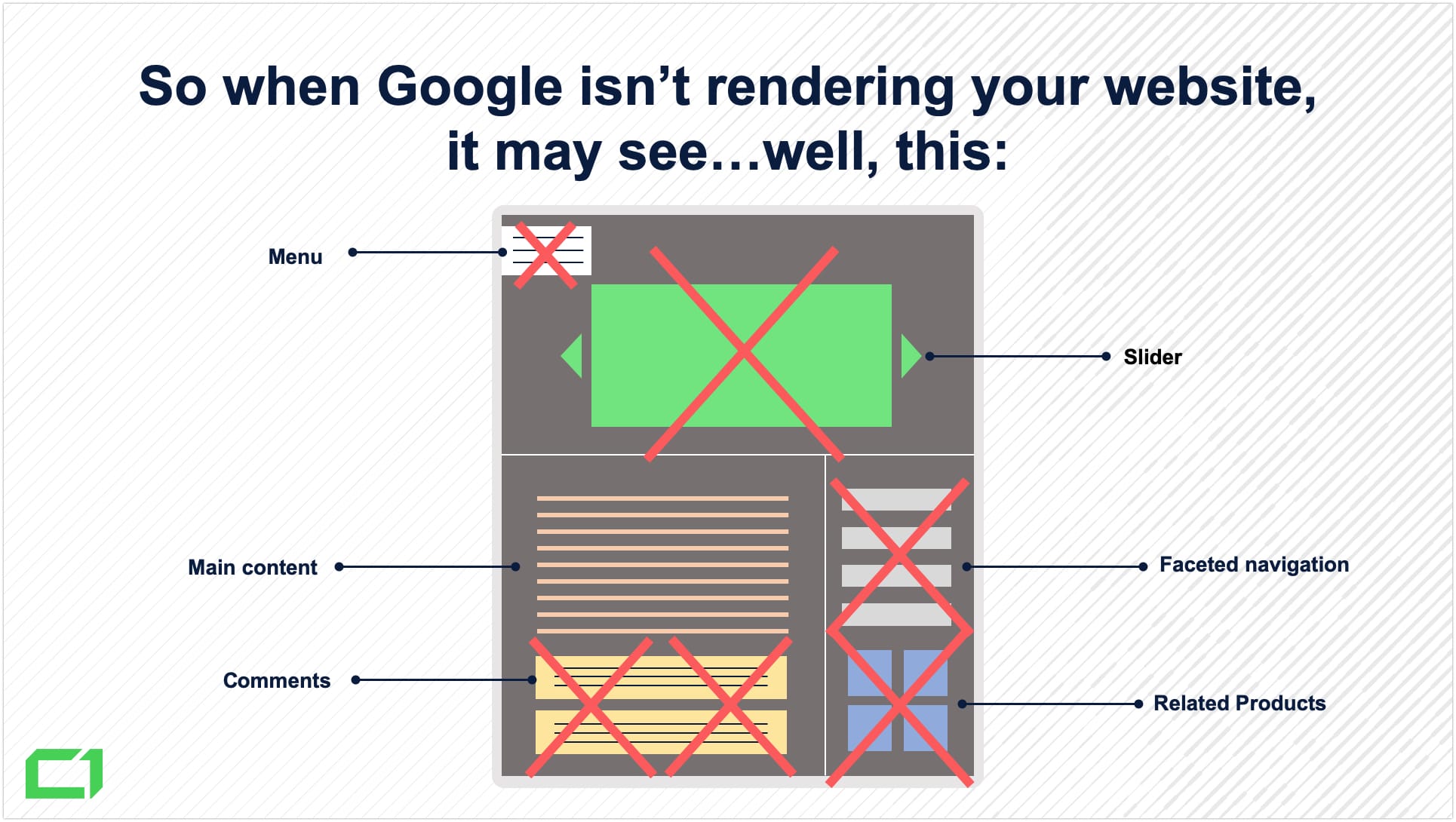We have previously addressed the influence of using JavaScript on modern e-commerce platforms and how SEOs should rethink their approach to optimizing it. However, it’s important for everyone to realize just how omnipresent JavaScript is these days – not just on large domains but literally everywhere on the web.
Website creation has evolved
Back in the early days of the internet, creating a website from scratch required technical prowess, and the more of it, the better. Webmasters would use HTML, CSS, and PHP to create static websites, and then sprinkle some JavaScript over them to make them more dynamic and visually appealing for the user.
The introduction of open source content management systems (CMSs) in the early 2000s revolutionized the website creation process. These days, nearly 60% of all websites use CMSs like WordPress or Joomla. With a CMS, anyone can create a website in minutes without any tech background and use JavaScript-based plugins to easily add modern features.
When it comes to professional web development outside of CMSs, the approach has changed as well. Even outside of React, Angular, and other frameworks, JavaScript is influencing web development and keeps pushing the medium forward at a pace that’s difficult to keep up with.
Web components made everyone’s life easier…
Somewhere around 2011, web components were introduced and have been one of the most successful web platform features ever since. They allow webmasters to create custom HTML elements with JavaScript, which can then be used across projects.
Thanks to web components, webmasters don’t have to spend time writing functionally identical code for every project. Instead, they can use a single custom element across many different projects without having to worry about potential conflicts.
The downside to the convenience and accessibility of web components is having a generation of web creators using tools without understanding how they work. So the fact that so many WordPress plugins and reusable web components are using JavaScript might go unnoticed.

…except Google.
As our data shows, on average, up to 32% of JavaScript content remains unindexed (not displayable in Google Search) after 30 days from being published.
For something to be indexed in Google, it has to be crawled and rendered first. Links placed in the JavaScript-powered product carousels will not be discovered until the JavaScript found in a web page’s source code is executed.
Search engines have always struggled with rendering JavaScript. Google, being the most technologically advanced, is able to deal with the most recent JavaScript features, but this doesn’t really solve the problem.
Here’s when you may want to take advantage of Rendering SEO services.
Executing JavaScript is resource-consuming, and there are always millions of new pages waiting out there to get indexed.
That’s why Google will normally index the HTML content first and then render the JavaScript elements when more resources become available.
As a result of not having their JavaScript-powered content indexed, pages unavoidably rank worse, and the whole domain’s internal structure deteriorates since so many links aren’t being discovered.
The consequences can get out of hand when JavaScript is used for redirecting users or altering the meta robots tag.
Does this affect you?
Maintaining an e-commerce store or a news website would be hell without the possibility of automating some tasks with JavaScript.
Thousands, sometimes millions of pages all need their separate URL addresses, meta descriptions, titles, bodies, and other elements. It may not always seem like it, but around 80% of the most popular e-commerce stores use JavaScript to inject crucial content into their product pages.
But it’s not only large websites that potentially suffer from these issues. Even if you run a WordPress blog, you could effectively hide your content from Google by using JavaScript for generating content or modifying metadata.
In his presentation during Digital Growth Unleashed in October 2019, Onely’s own Bartosz Góralewicz pointed out which website elements usually rely on JavaScript and Google may not see your website because of that.
I’ll let the slides tell the story.
What usually relies on JavaScript?

The roots of the problem:

What Googlebot may see when not rendering your website:

Even if it’s used for seemingly less important elements, unoptimized JavaScript usage can have a tremendous negative impact on the website’s performance in search.
Want to know more?
Then you should watch Onely’s Bartosz Goralewicz explain it all in “The State of JavaScript and HTML Indexing in 2020“:
Wrapping Up
Traditional SEO doesn’t usually address optimizing JavaScript, especially when even SEOs struggle to properly define what constitutes a JS website; so when a website’s search traffic doesn’t meet expectations, many businesses struggle to pinpoint the problem.
That’s what we’re here for with our JavaScript SEO audit.
Onely has conducted groundbreaking research, testing the search engines’ ability to render and index JavaScript. In fact, the name Onely has practically become synonymous with JavaScript SEO. We have the state-of-the-art expertise needed to optimize your website towards both search engines and users. And if you want to explore more, here’s an intro to our technical SEO services.










